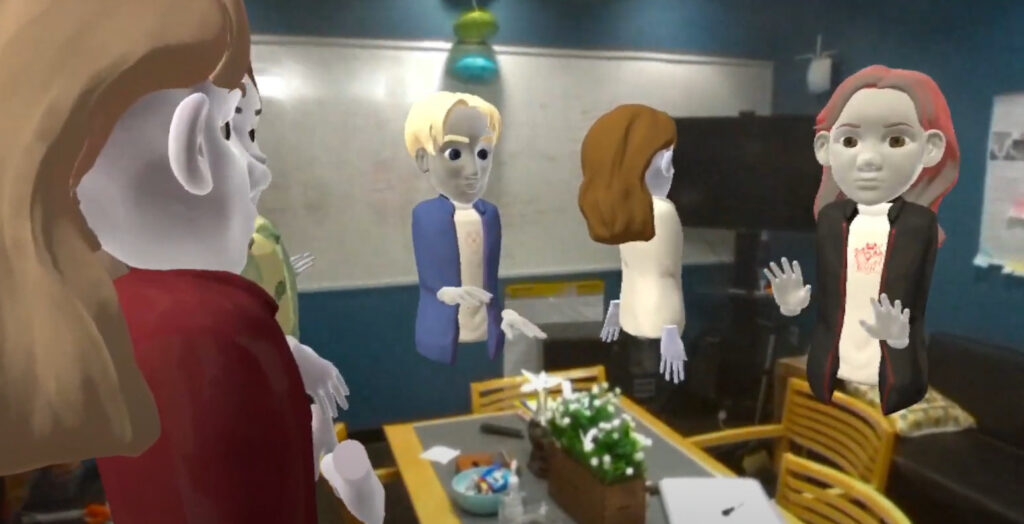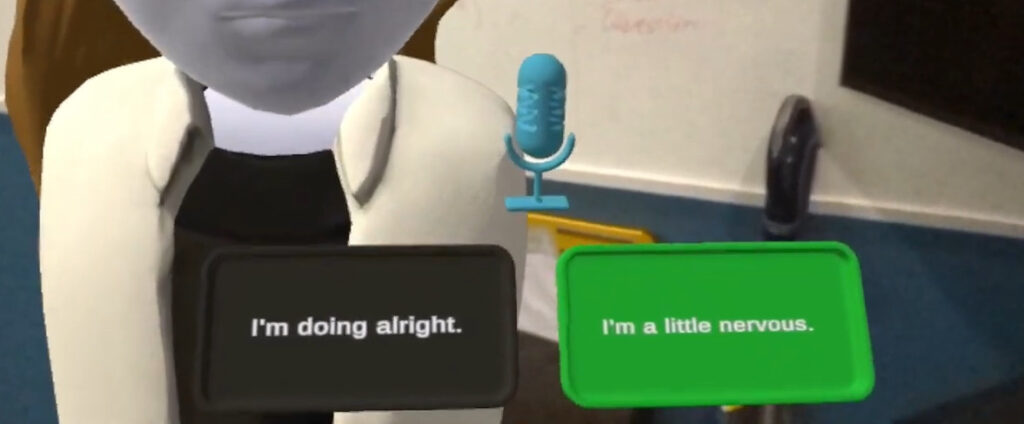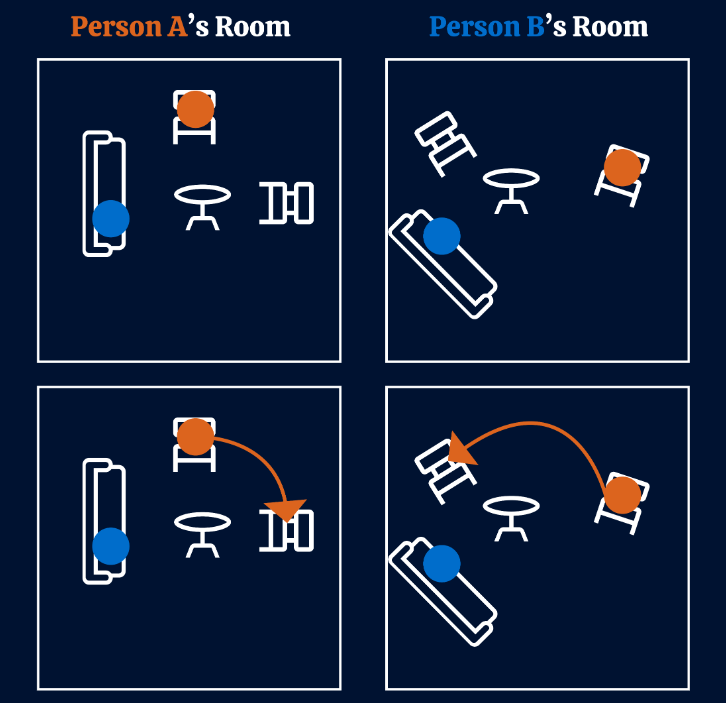Roles: Designer, Pitch Lead, Artist
Team: 5 people
Dev Time: 14 weeks
• Pitched and designed a Quest Pro MR party simulation based on exposure therapy techniques after distilling advice from licensed therapists.
• Successfully created feelings of social anxiety in voluntary playtesters, though immersion in mixed reality is something we desire to improve.
This project was originally pitched to help young adults overcome their social anxiety using mixed reality technologies. The main goal of the project was to create something that would encourage a socially anxious person to engage in at least one new social interaction afterwards. We wanted to tackle the design challenges in this intersection of mental health and new technologies because the design is so contradictory in nature.
First of all, getting socially anxious people to play a game that is inherently social is a huge barrier. This game has to safely attract and onboard people who might not want to play it. We also chose the Quest Pro’s colored passthrough to create a mixed reality experience, which invited technical issues and the never-ending debate of how realistic our assets should be to feel immersive but not uncanny.

With a timeline of 14 weeks, we iterated repeatedly and created an experience where the guest begins in the real-life hallway, outside the door to a simulated party. Here, the guest is given a Likert scale to self-report their comfort levels, which therapists call SUDS, or the Subjective Units of Distress Scale. Upon crossing the doorway threshold, the guest is faced with a crowd of virtual avatars who are chatting and dancing to boisterous music. These characters fill the room according to the room setup we define on the Quest Pro so that none are standing in your real furniture. The guest finds a wallet on the floor and is tasked with talking to various NPCs around the room, using their real voice to select dialogue options until they find the person whom the wallet belongs to.

The moment of stepping through the doorway worked really well. Entering a new space full of uncertainty and the anticipation of social interaction is extremely nerve-wracking to people with social anxiety, and it can still be startling to those without.
Designing room layouts for mixed reality is challenging because the player’s environment is completely out of our control. Initially, we even wanted to pseudo-sync two players’ different room layouts together so that they could navigate their own physical spaces in a way that appeared logically to the other player with their respective virtual avatars. The experience ended up being single-player, removing the need to implement solutions to this problem.

Deciding the art style for assets in a mixed reality game is also challenging. On one hand, with passthrough video being visually realistic and our need to induce social anxiety, a realistic art style could benefit us. On the other hand, too much realism often creates uncomfortable, uncanny human characters. We kept ricocheting between realism and stylization, trying to find the balance through much playtesting and feedback.

Working with therapists, our subject matter experts (SMEs), taught us a lot as well. I personally felt that we leaned too much into the exact words and advice of our SMEs, following their industry and anchoring too closely to what they knew already existed. If I were to work with a SME again, I would make sure to think similarly to a root cause analysis and figure out what is really effective from the SME’s advice instead of taking it word for word. Being more flexible would allow us to design more novel games or experiences.